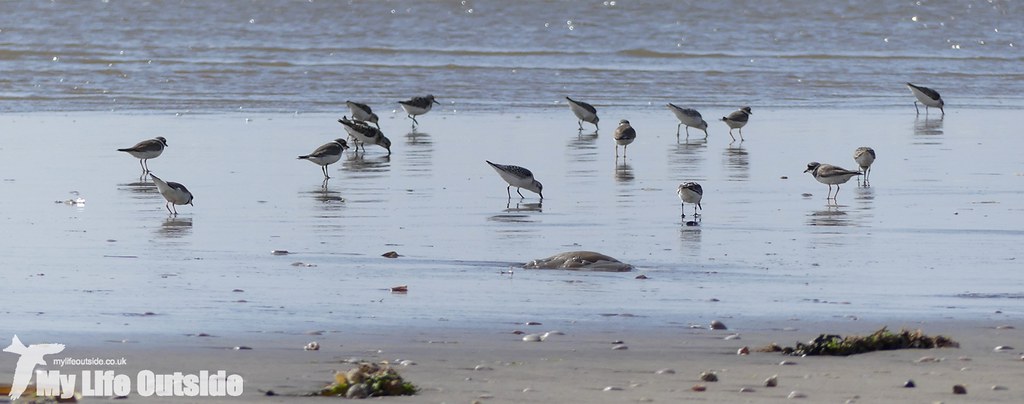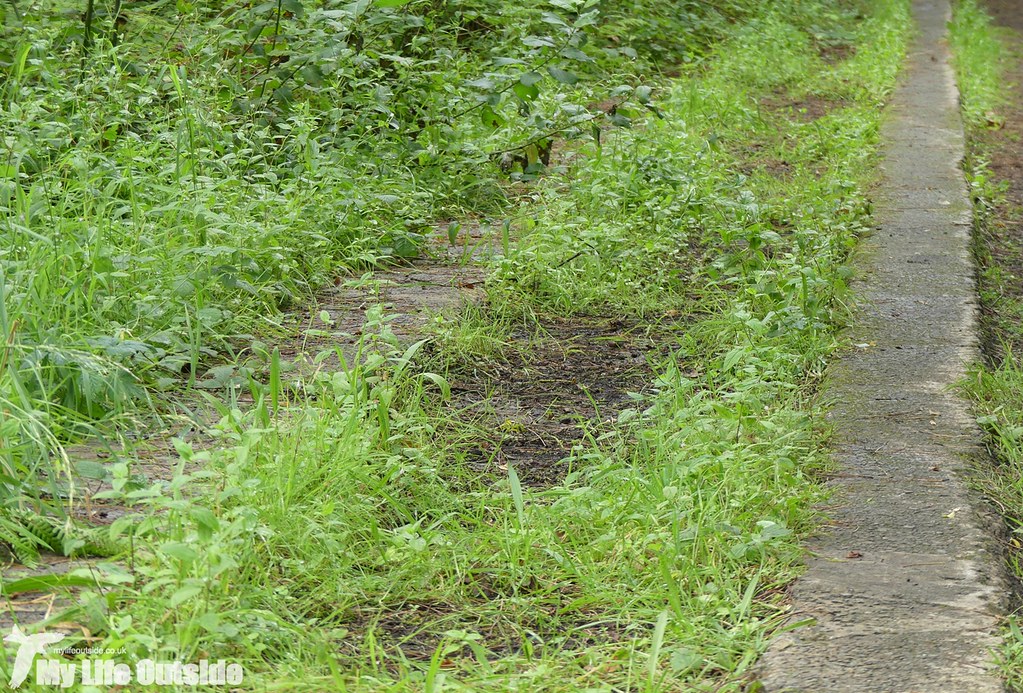Bank holiday Sunday dawned wet and wild, justification if any were needed for ending our camping trip when we had. If there’s one thing I could do without ever having to experience again it’s taking down a tent in the rain. We took the opportunity for a leisurely start and when conditions looked to be improving by early afternoon headed over to Cefn Sidan. On the way we encountered a storm of biblical proportions that came, dumped its load and went within the space of just a few minutes. The roads were awash yet we arrived to almost full sunshine with only the crashing waves left as any sign of what had just occurred.

Our view up the beach was truly impressive and on a scale that only Cefn Sidan can really achieve. Wide expanses of sand were covered in a thin layer of sea spray, obscuring distant fishermen and lending the entire scene an otherworldly quality. I felt as if we could have been anywhere let alone just a couple of miles down the coast from a major (by Welsh standards) city. It was clear that the rough seas had brought in a lot of flotsam leaving the strandline covered in cuttlefish bones, lumps of ancient wood from Gower’s exposed peat beds and several huge Barrel Jellyfish. Regular readers of this blog will no doubt have seen these giant creatures before but that’s not going to stop me including another here with a handily positioned foot to lend some scale. They are big!

More interestingly perhaps was that the wave washed sands were simply awash with waders. At first there were just a couple of Ringed Plovers but as we headed west numbers continued to grow as flocks of Sanderling and Dunlin joined the party. At the old breakwater almost the entire beach was covered by thousands upon thousands of scurrying birds, an epic sight and easily the best wader display I’ve seen locally for quite some time. Exact counts were clearly impossible but the split was roughly 40:30:30 (Dunlin:Sanderling:Ringed Plover). Sadly nothing unusual made itself known but I’m sure a Curlew Sandpiper or Little Stint were out there somewhere.



Leaving the beach behind we peeled off through the dunes and into Pembrey forest proper. Apart from providing a nice walk I was also on the lookout for more remains of the Royal Ordnance Factory which was sited here during world war two. Though much of the site was cleared there are still tantalising glimpses to be found, the most obvious of which are the large bunkers which I’ve previously written about here. Linking them was a large network of railways and it was the remains of these which we stumbled across nestled amongst the trees. The first section consisted of only concrete foundations but the second was virtually complete with rails and a couple of points still in situ. I did think that hunting these artefacts was a fairly niche interest but given that posts covering the subject are frequently my most viewed on here, maybe not.


The real surprise of the day though was to be found in a partially dried up pool nestled deep in the woods. On initial inspection it looked devoid of life but peering closer we spotted a couple of diving beetles bigger than any species I’ve seen before. Looking them up soon revealed them to be Great Diving Beetles, a voracious predator which feeds on newts, small fish and other smaller invertebrates. Able flyers they can easily move between water sources so the fact that this pool was on the way out doesn’t mean the end for them.


In terms of birds the woodland seemed relatively sparse with only a few Robins, Goldfinches and Coal Tits for our efforts. Butterflies were better represented with common species including Meadow Brown and Small White on the wing but by far the most numerous were Speckled Woods. A Golden-ringed Dragonfly was also about but alas no photos on what was probably my last opportunity of the year.



0 Comments